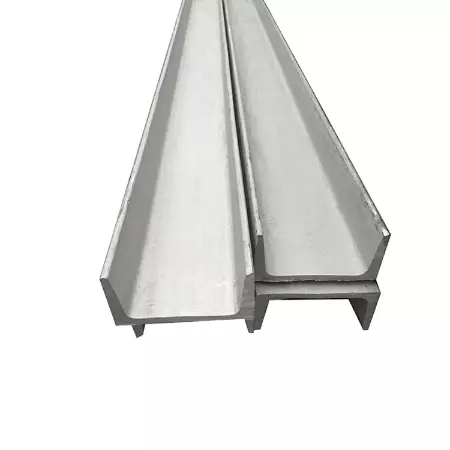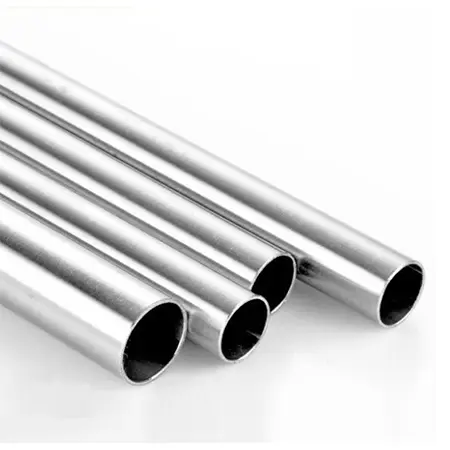Introduction
AISI 410 stainless steel plate is a versatile and cost-effective, martensitic stainless steel known for its good balance of strength, hardness, and moderate corrosion resistance. This popular grade offers an attractive combination of properties for various applications.
Composition
The key element in AISI 410 is:
Chromium (11.5% min): Provides the foundation for corrosion resistance and contributes to the martensitic microstructure.
Manganese (less than 1%) and silicon (less than 1%) are also present in small amounts, influencing its properties.
Characteristics
Moderate Corrosion Resistance: AISI 410 offers adequate protection in mildly corrosive environments, particularly indoors or with good surface finishing and maintenance. It performs better than non-stainless steels but is not as corrosion resistant as austenitic stainless steels like 304.
High Strength and Hardness: Compared to ferritic grades like 409L, 410 offers superior strength and hardness due to its martensitic structure, which can be further enhanced through heat treatment. This makes it suitable for applications requiring wear resistance.
Good Formability: AISI 410 exhibits good formability in its annealed condition, allowing for shaping and drawing during fabrication. However, cold working can harden the material and reduce its formability.
Magnetic: AISI 410 is magnetic in all conditions.
Weldability: AISI 410 can be welded, but due to its martensitic structure, it's more susceptible to weld cracking compared to austenitic steels. Careful welding procedures and post-weld heat treatment might be necessary to maintain good mechanical properties and corrosion resistance in the weld zone.
Uses
Due to its affordability, good combination of strength and corrosion resistance, and decent formability, AISI 410 stainless steel plate finds application in various industries, including:
Aerospace Parts: Certain non-critical aerospace components, such as landing gear components or engine parts, can utilize 410 for its strength and affordability.
Hardware: High-strength bolts, screws, nuts, and other fasteners can benefit from the strength and corrosion resistance of 410.
Cutlery: Knife blades can be made from 410 due to its good balance of hardness, corrosion resistance, and affordability. However, higher-grade stainless steels might be used for premium cutlery.
Automotive Parts: Gears, shafts, and other wear-resistant components can utilize 410 for its strength and affordability, especially in less critical applications.
Machinery Parts: Certain machine components requiring both strength and some corrosion resistance can benefit from 410. considering the specific environment.
| Product Name | AISI 410 stainless steel plate | |
| Commodity | Austenitic, Ferritic, Martensitic, Duplex, Cold rolled, Hot rolled | |
| Grade | 201. 202. 301. 304. 304L, 347. 321. 309S, 310S, 316L,2205. 409.410. 410S, 420. 420j1. 420j2. 430. 439. 443. 444.32760.32750.904L etc | |
| Austenitic stainless steel | 200 Series: 201. 202 | |
| 300 Series: 304. 304L, 309S, 310S, 316. 316L, 316Ti, 317L, 321. 347 | ||
| Ferritic stainless steel | 409L, 430. 436. 439. 441. 444. 446 | |
| Martensitic stainless steel | 410. 410S, 416. 420J1. 420J2. 431.440.17-4PH | |
| Duplex and Special Stainless: | S31803. S32205. S32750. 630. 904L | |
| Standard | ISO, JIS, ASTM, AS, EN, GB,DIN, JIS etc | |
| surface | N0.1. N0.4. 2D, 2B, HL, BA, 6K, 8K, etc | |
| Delivery time | 3-15 days subject to the clients' requirement and quantity | |
| Package | clients' requirement and Standard export sea-worthy packing | |
| MOQ | 1 ton | |
| Sample | Free Sample | |
Available Size Range
| Dimension | Range |
| Thickness | 0.1-200mm |
| Width | 10-2000mm |
| Length | 1000mm-11000mm or as customer' s requirement |
Additional Points
AISI 410 comes in various standard specifications, such as ASTM A240/ASME SA240. ensuring consistent material properties.
When selecting between 410 and other stainless steel grades, consider the specific application's requirements for strength, corrosion resistance, and budget. For superior corrosion resistance, austenitic steels might be a better choice. For applications demanding the highest strength and hardness, higher-grade martensitic steels could be an option.




